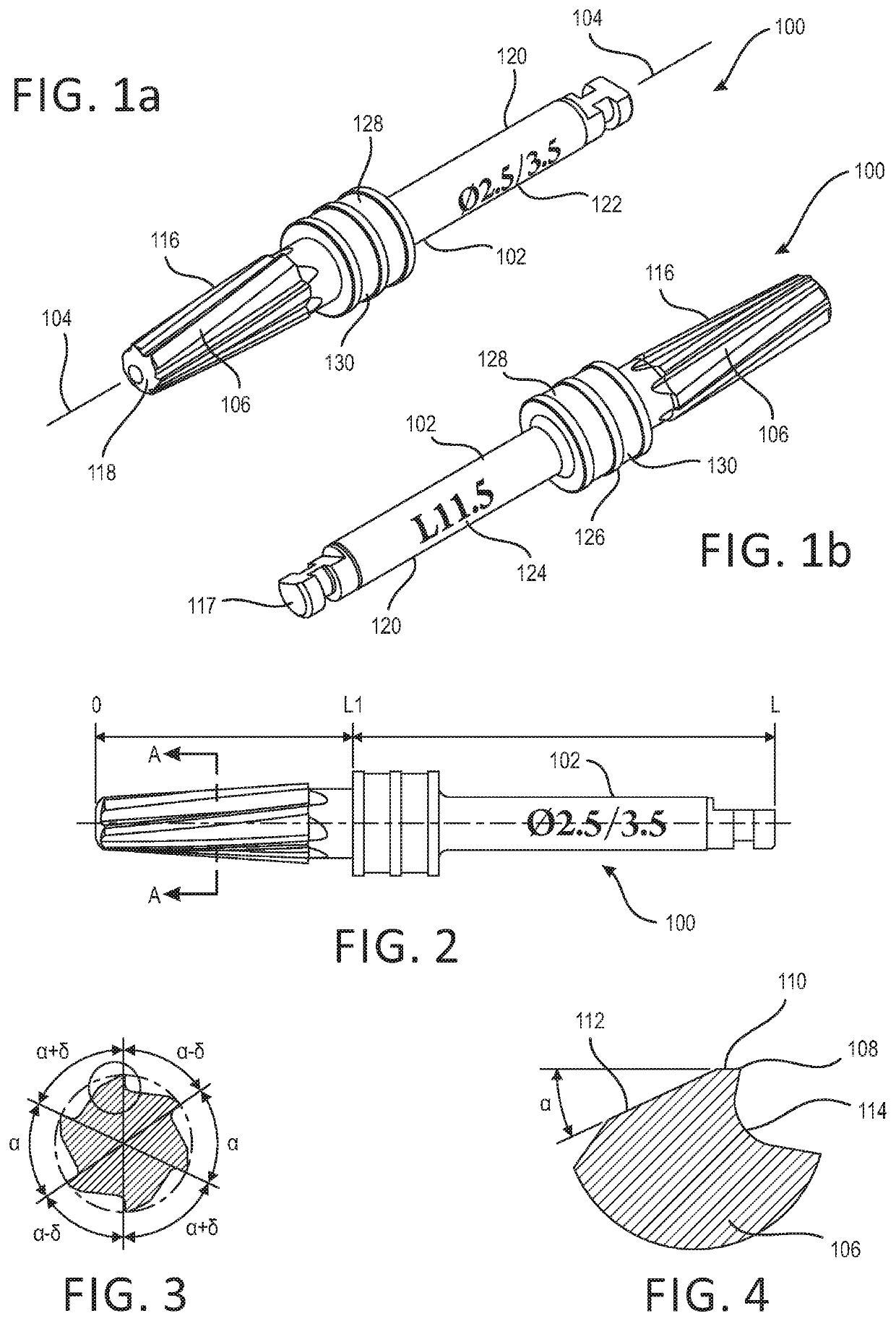Compression tool for dental implantation sites, and a method of using the same
a compression tool and dental implant technology, applied in the field of tools, can solve the problems of reducing the heat generation reducing the efficiency of the entire borehole drilling process, so as to reduce the amount of heat generated
- Summary
- Abstract
- Description
- Claims
- Application Information
AI Technical Summary
Benefits of technology
Problems solved by technology
Method used
Image
Examples
Embodiment Construction
[0021]With reference now being made to the drawings, and more particularly to FIGS. 1a-4, a new compression tool is disclosed and is generally indicated by the reference character 100. More particularly, it is seen that the new compression tool 100 comprises a shank or body portion 102 which is defined around a longitudinally extending axis 104, and wherein the lower section of the shank or body portion 102 comprises a plurality of longitudinally extending flute sections 106 disposed around the external surface portion of the lower section of the shank or body portion 102 within a circumferential array. It is to be noted that the plurality of flute sections 106 are not spaced equiangularly around the longitudinal axis 104 of the drill or osteotome 100 as can best be appreciated from FIG. 3, wherein it is clearly illustrated that the angular spacing defined between some adjacent flute sections is denoted by means of the angle cc, whereas the angular spacing defined between some other...
PUM
 Login to View More
Login to View More Abstract
Description
Claims
Application Information
 Login to View More
Login to View More - R&D
- Intellectual Property
- Life Sciences
- Materials
- Tech Scout
- Unparalleled Data Quality
- Higher Quality Content
- 60% Fewer Hallucinations
Browse by: Latest US Patents, China's latest patents, Technical Efficacy Thesaurus, Application Domain, Technology Topic, Popular Technical Reports.
© 2025 PatSnap. All rights reserved.Legal|Privacy policy|Modern Slavery Act Transparency Statement|Sitemap|About US| Contact US: help@patsnap.com

